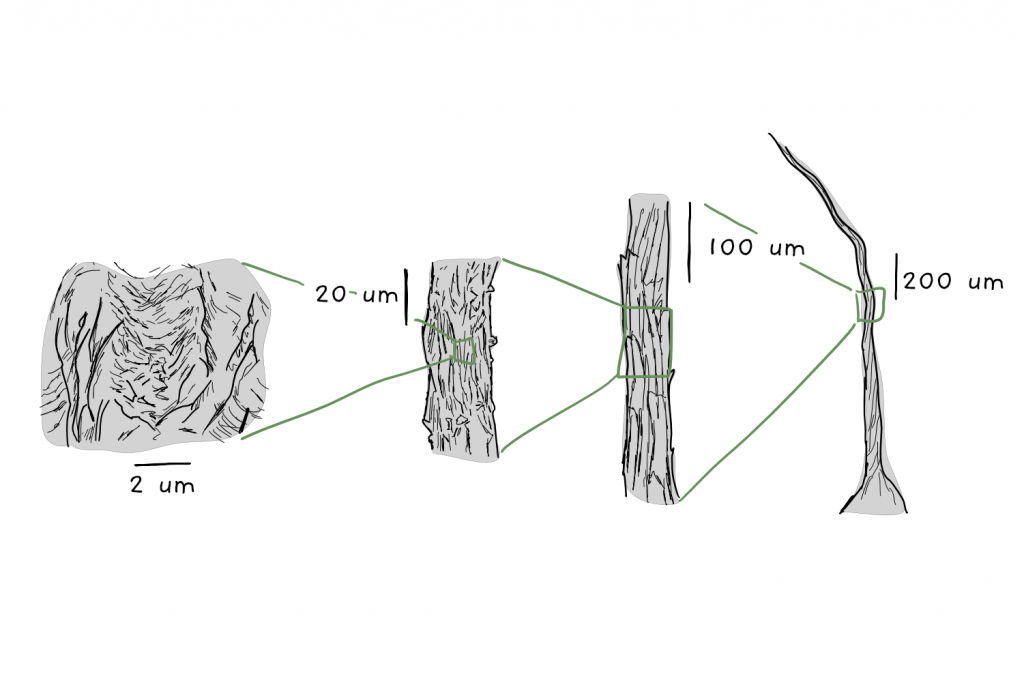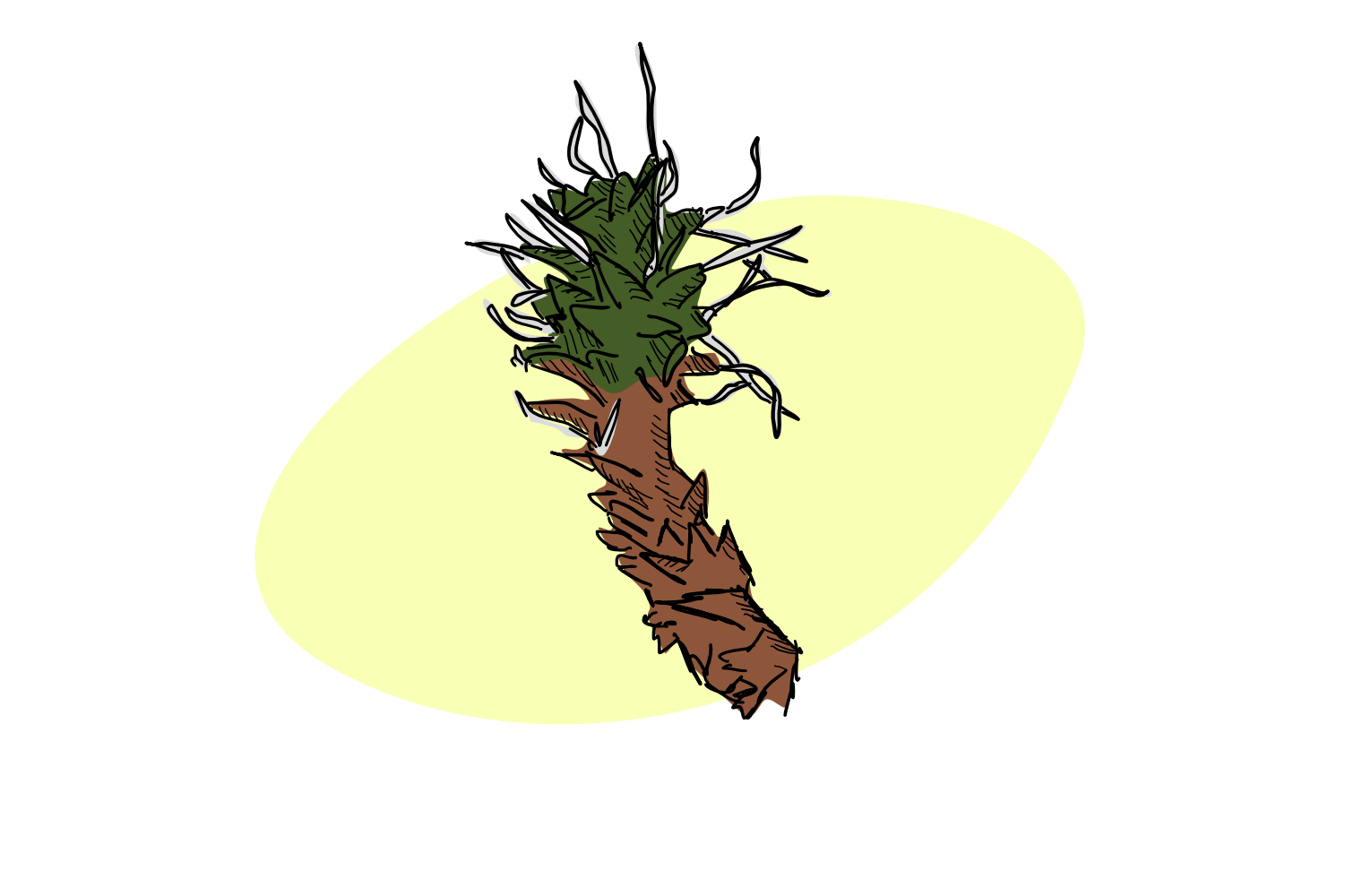aka- ‘Making the moss’t of the rain’
Syntrichia caninervis is a moss. Personally, when I think of mosses, I mostly tend to picture them clinging to the moist side of a tree, or snuggling in amongst the undergrowth. You know, kind of damp and earthy places.
But unlike whatever-that-moss-that-is-growing-all-over-my-back-patio-is, Syntrichia caninervis is not found primarily in a overwatered and underloved boggy English garden. Instead, it’s found across the North – including the the Mojave desert in the US, and the Gurbantünggüt Desert of Northwestern China.
So what’s a moss doing in the desert, and how exactly does it keep itself from dying of thirst?
Many plants have developed specialised mechanisms to prevent them from getting parched. Leaves can have low surface area to volume ration (think succulents), to prevent the rapid transpiration of water and increase water storage, or, on the other sides of the equation, can be specially designed in shape, position and material to help channel rainfall down towards the roots. Speaking of which, a common adaptation to water restriction is specialised roots systems: long and deep to tap into deeper reservoirs, or sometimes spread across the surface, to maximise the water harvest.
Of course, moss don’t have roots. Like other non-vascular plants (hornworts and liverworts), they instead have structures called rhizoids, which act to anchor the plant, but which don’t contain the vasculature required to suck water from the earth.
But while our desert moss Syntrichia caninervis doesn’t have roots, it does have awns.
Awns, also known as ‘leaf hair points’, are pretty much moss tails. They’re thin, long semi-transparent structures that grow a couple of millimetres maximum from the tip of the main moss body (which is also only about 3-8 mm big). Maybe it’s better if I stop trying to explain this to you and we just draw a picture?

Awns aren’t particularly spikey, so they’re unlikely to act defensively against herbivores like thorns do. They’re also pretty sparsely located, so they are unlikely to act as a major defence against UV rays (think ‘animal hair’). But research from scientists Tao and Zhang in 2012 suggested that awns do help S. caninervis get access to water. Plants with awns had about 25% more water than those which had had their awns removed, a process attributed to both inhibition of dehydration and the wetting process itself.
In order to better understand how these tiny moss tails collect water, Zhao Pan and colleagues used scanning electron microscopy to look really closely at the shapes and structures on the surface of these tiny awns, observed slow-mo water capture by the moss, and coupled it all with some energy calculations. From this, they could hypothesise that the moss used several different methods, at several spatial scales, to increase its access to that most precious of desert resources.
Starting with the smallest, the moss awn was found to have tiny longitudinal nanogroves, just 100 nanometres deep and 200 nm wide, which the authors calculated might be able to act as ‘nucleation sites’ that reduces nucleation energy for dew capture. Moving up a scale, the awn also possess ‘microgroves’ – 3 micrometres wide and 1.5 deep, that act as a collection site for fog.

Still not quite at the ‘visible to the human eye’ scale, the moss awn also utilizes tiny outwards-pointing barbs. High densities of the barb hairs placed unequally along the structure encourages the collection of water at that specific point. Once enough water has nucleated at these barb points, it zips down the fibre toward the main body of the plant. This is helped by the conical shapes produced by the outwards-facing barbs, which act to form an energetic funnel. Finally, at the macro scale, the furry clusters of awns act to shock-absorb any incoming rainwater, and prevent splashing. The growth of the moss plants close to each other helps keep the water in the community.
Overall, these various features and various scales, help to keep the moss moist. But the desert is still an incredibly dry place. S. caninervis spends a lot of its time looking fairly brown, but is able to revitalise, and regreen within a short space of time once water is available. For that reason, it’s also considered to be an interesting model to study the molecular process that allow the plant to tolerate desiccation, and to recover.
The authors suggest that the features used by this desert moss might also be found in other dry-adapted species. The fine fibres of the bunny-eared cactus (Opuntia microdasys) for example, have already been suggested as nucleation points for dew. Beyond that, Pan and colleagues speculate that the lessons learned here, might help in human design and development of new methods to both harvest and transport water in and to the drier parts of the earth.
References:
The upside-down water collection system of Syntrichia caninervis. Zhao Pan, William G. Pitt, Yuanming Zhang, Nan Wu, Ye Tao & Tadd T. Truscott. Nature Plants volume 2, Article number: 16076 (2016)
We found it online via researchgate.
The previous research on awns:
Effects of leaf hair points of a desert moss on water retention and dew formation: implications for desiccation tolerance. Ye Tao, Yuan Ming Zhang. J Plant Res (2012) 125:351–360
